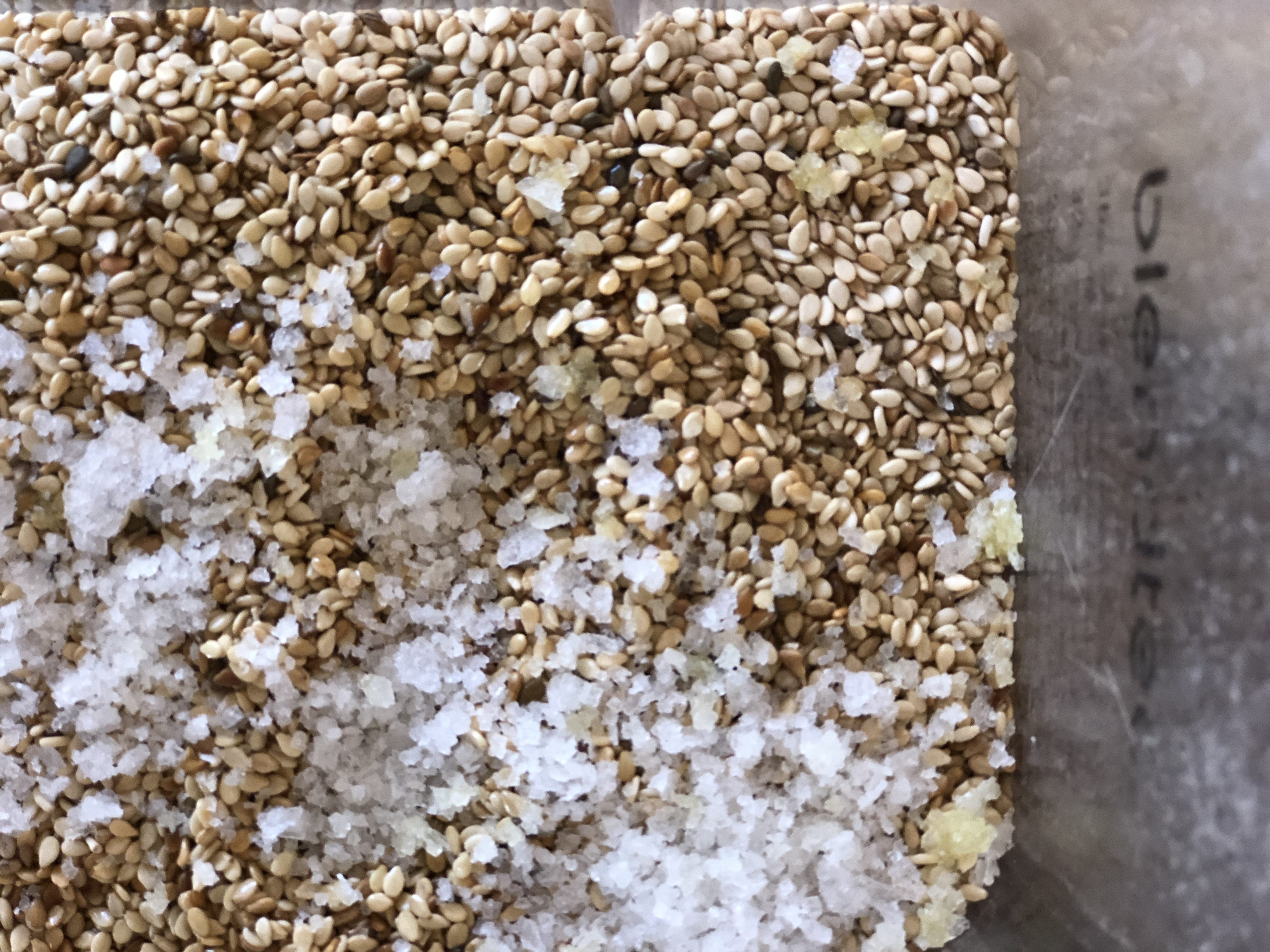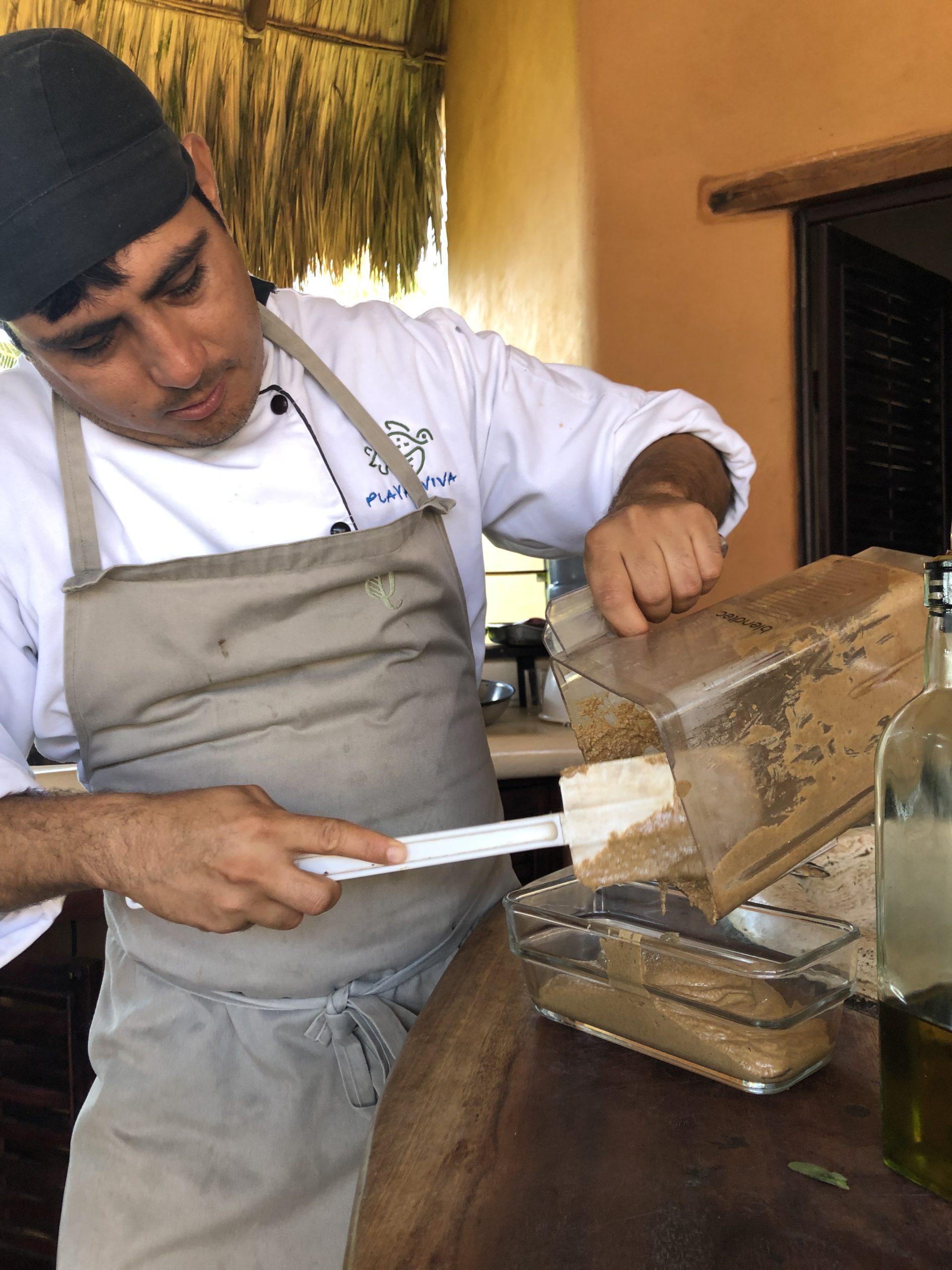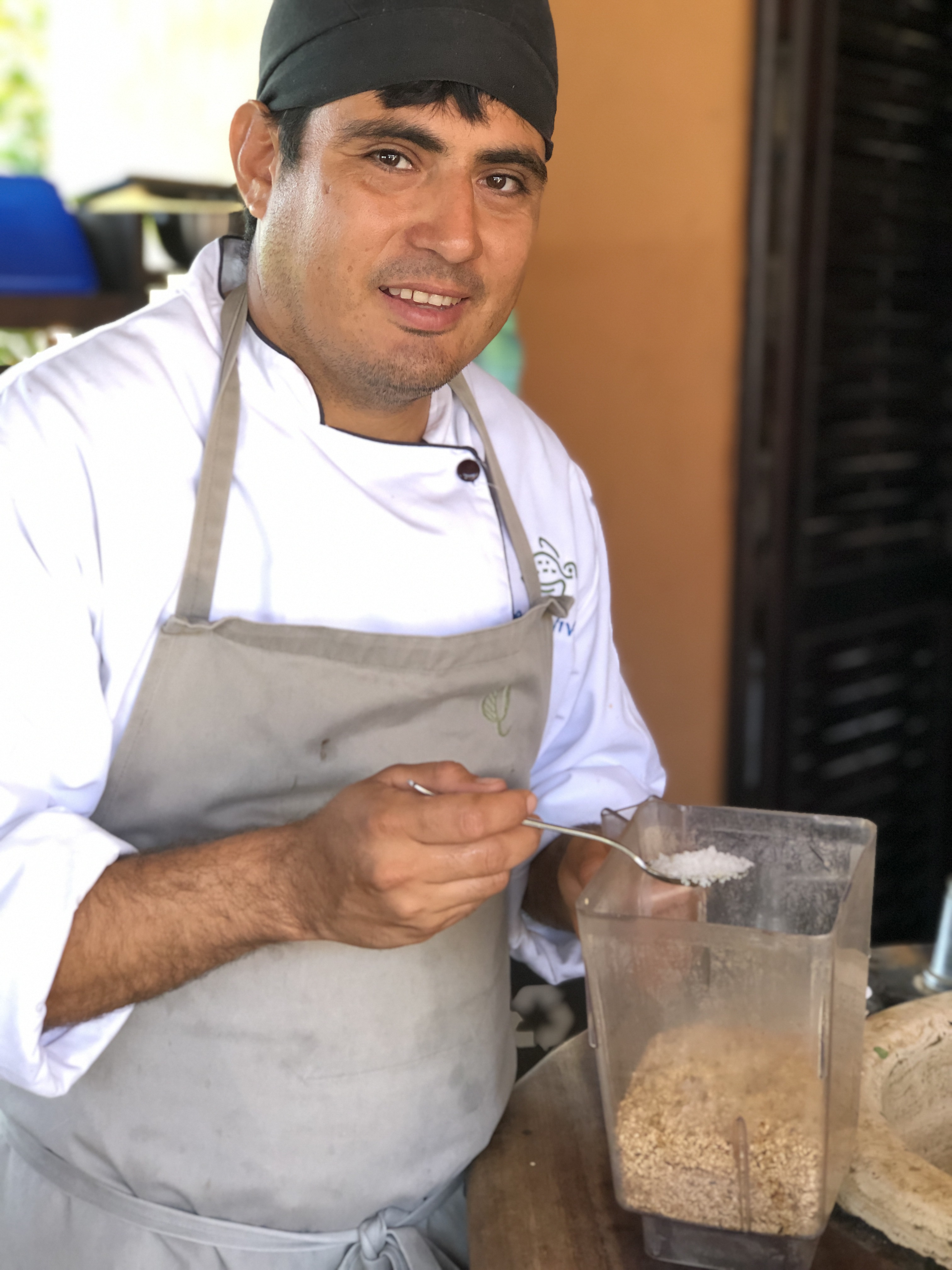Introducing Gente Viva Sesame
As part of our ongoing mission to support local farming communities in our home town of Juluchuca, we are proud to announce Gente Viva Sesame – direct-trade organic sesame seeds, grown on site and nearby, by farmers from Juluchuca and other local communities who have farmed their land for generations. This natural product is a great way to take a little bit of Playa Viva home with you, especially when used in some of our delicious recipes, found at the bottom of this post.
Our Farmers
Our work in rural areas in Mexico refutes the myth that opportunities do not exist outside the city. In doing so, we hope to revitalize rural communities and propose alternatives that empower residents of rural areas to form more resilient food systems and create connections to other firms that support these goals for sustainable, organic and regenerative agricultural and food ecosystems. Gente Viva works with farmers to provide technical support and training to help them farm organically and get organic certification. Additionally, we provide these farmers with secure market prices for their crops in advance, giving them a consistent, dependable income to support their families.
Our Process
Gente Viva’s farmers plant sesame annually during the second half of the rainy season in late July or early August. The timing of planting is imprecise if you rely on a calendar, but farmers depend on their years of experience to time it just right. It’s important that they prepare the land for planting during a mid-rainy season dry spell that can last from two to four weeks. They want to ensure that the seeds are in the ground by the time the rain starts up again, or shortly thereafter. Since they farm without using chemical herbicides, they must weed in between the rows of sesame twice per season. Once about ten days after the plants have emerged from the soil and again about slightly more than halfway through the season. From planting to harvest is generally 3-4 months, depending on the rains. For harvest, timing is again key because once the sesame stalks with the seed pods have been cut they must dry in the sun 15-20 days. So, it’s important that harvest happens as the rainy season is ending. Once they have harvested, farmers are at the mercy of nature, hoping for no or only light rains once the stalks are drying in the sun. During the drying process, the seed pods open. This is called ‘shattering’, and the story is that this is where the phrase ‘Open Sesame’ comes from–because the seed pods open on their own as they dry out. Because the pods face upright on the stalk, the seeds do not fall out once the pods shatter. Instead, once all the pods have dried and shattered the farmers return to the sesame and shake the stalks causing the seeds to fall onto a tarp or other surface where they can then be collected with shovels and bagged in 110 pound sacks. The sacks are transported to Gente Viva’s cleaning facility, where they pass through a machine that cleans them of dust and debris.
Our Sesame Seeds
Gente Viva’s sesame seeds are unhulled, which means that the seeds contain their outer husk. The husk is hardly noticeable; in fact, it’s quite possible you’ve consumed unhulled and hulled sesame seeds and never noticed the difference. Unhulled seeds are generally golden brown, while hulled seeds are whiter. The industrial food system often prefers hulled seeds because they look ‘cleaner’ to some folks. However, as with many plant foods the outer hull (or peel in the case of fruits and vegetables) frequently contains many of the nutrients. For sesame seeds, unhulled seeds provide greater amounts of fiber, calcium, manganese and zinc if the hull is kept intact. Three tablespoons of sesame contain 22% of an adult’s recommended daily intake of calcium and 25% for magnesium. Sesame seeds are also a good source of Vitamins B1, B3 and B6, as well as many other nutrients. Check your trusted health information site for complete information.
In Your Kitchen
Gente Viva’s sesame seeds have an earthy, slightly nutty flavor, which is enhanced by lightly roasting them in a skillet. If you roast sesame seeds, be sure not to burn them as they can turn bitter when overcooked. When roasting, stir occasionally to ensure all the seeds roast evenly and once you start to smell the aroma of the seeds, then they’re done. You can grind roasted seeds in a food processor to get a sesame powder, which has a savory taste and is an excellent condiment for salads and other vegetables. If you mix this sesame powder with sea salt you’ll have a condiment called Gomasio, of Japanese origin. Below are a few of our favorite recipes from the Playa Viva kitchen that make use of delicious Gente Viva Sesame.
Pasta de Ajonjolí – Tahini Paste
Ingredients:
- 3 cups of toasted sesame seeds
- 6 tablespoons of EVOO (extra virgin olive oil)
- 1 tablespoon of sea salt
Preparation:
- Toast organic sesame seeds for 5 to 10 minutes in a saute pan on the stove. The seeds are ready when they begin to turn a golden color, or with luck, you can see some of the oils beginning to coat the seed.
- Mix all ingredients together in a food processor.
- Mix on low speed for two minutes. Slowly introduce pulses of higher speeds to thoroughly mix all ingredients. If a more thorough mixing is needed, stop the food processor, then gently mix the ingredients in the food processor with a spoon. Remove your spoon and mix ingredients with the food processor for another two minutes.
- Remove the tahini paste from the food processor and store in a resealable container.
Enjoy! Tahini paste can be stored in the refrigerator for up to eight weeks.
Aderezo de Ajonjolí – Sesame Salad Dressing / Tahini Dressing
Ingredients:
- 3 tablespoons of tahini paste (Make your own using the recipe above!)
- 4 limes, halved and squeezed
- 2 tablespoons of EVOO
- 1 teaspoon of sea salt
- 1/4 cup of filtered water (as needed)
Preparation:
- In a medium size mixing bowl, add three tablespoons of your homemade tahini paste. See recipe above for details.
- Halve four limes and squeeze their juices above a sieve to avoid rouge seeds in your dressing. Get creative – lemons will also work.
- Add two tablespoons of organic olive oil and one pinch of sea salt to the mixing bowl.
- Gently whisk the ingredients with a fork (or whisk) to blend the flavors.
- Slowly mix in a few tablespoons of water to the consistency of your liking. We recommend no more than one quarter cup of water to maintain flavor.
- Bottle the dressing and enjoy!
Dressing will maintain freshness for one week in the refrigerator. Eat it regularly for a boost of flavor on all your dishes!




